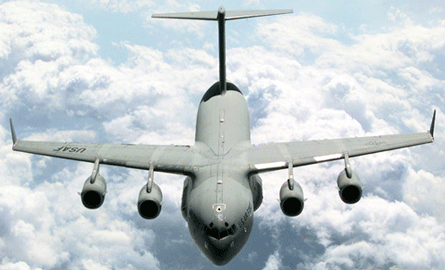The C-17 is likely to be the first to be fitted with the technology
Northrop Grumman has won an extended competition to select a next-generation missile warning system for the US Air Force's airlift fleet, with its two-colour infrared sensor technology to dramatically extend the range and sensitivity for detecting IR-guided missiles.
The company will deliver an initial 18 units during low-rate initial production, with these to allow the air force to conduct an in-flight assessment of the technology before taking a decision on full-rate acquisition. The new missile warners will upgrade the sensors used for cueing Northrop's AAQ-24 large aircraft infrared countermeasures (LAIRCM) system, with a rival, one-colour seeker offered by Lockheed Martin having been rejected.
 |
|---|
© USAF |
"The [Boeing] C-17s are really the first place in the LAIRCM programme that they usually put the spiral upgrades," says Jack Pledger, Northrop's director of business development. "We would anticipate that the very large aircraft would be the first to get this."
IR technology offers vast potential for capability upgrades compared with ultraviolet-based detectors, Pledger says. Northrop's missile warning sensor searches for the known IR signature of a rocket motor in two colours - red and blue - without the light attenuation caused by the UV-band. Although IR sensors are limited by obstacles in the atmosphere, such as cloud, rain or smoke, that is not a problem for a missile warner. "If the missile can see you [in the IR spectrum] you can see the missile," Pledger notes.
The USAF award marks the second military use of Northrop's two-colour, IR-based missile warner, with the US Marine Corps already installing the system in some of its Boeing CH-46s and Sikorsky CH-53D/Es. A different version of the same technology is also being sought by the US Navy for its light helicopters and Bell Boeing MV-22 Osprey tiltrotor under the joint and allied threat awareness system programme, which also proposes adding a hostile fire indicator to the missile warning system.
Source: Flight International























